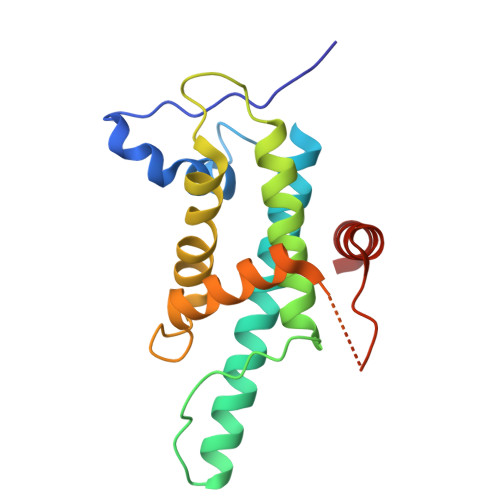JBP1 and JBP3 have conserved structures but different affinity to base-J.
de Vries, I., Adamopoulos, A., Kazokaite-Adomaitiene, J., Heidebrecht, T., Fish, A., Celie, P.H.N., Joosten, R.P., Perrakis, A.(2024) J Struct Biol 217: 108161-108161
- PubMed: 39674235
- DOI: https://doi.org/10.1016/j.jsb.2024.108161
- Primary Citation of Related Structures:
9GSO, 9GSQ - PubMed Abstract:
Base-J (β-D-glucopyranosyloxymethyluracil) is an unusual kinetoplastid-specific DNA modification, recognized by base-J containing DNA (J-DNA) binding proteins JBP1 and JBP3. Recognition of J-DNA by both JBP1 and JBP3 takes place by a conserved J-DNA binding domain (JDBD). Here we show that JDBD-JBP3 has about 1,000-fold weaker affinity to base-J than JDBD-JBP1 and discriminates between J-DNA and unmodified DNA with a factor ∼5, whereas JDBD-JBP1 discriminates with a factor ∼10,000. Comparison of the crystal structures of JDBD-JBP3 we present here, with that of the previously characterized JDBD-JBP1, shows a flexible α5-helix that lacks a positively charged patch in JBP3. Mutations removing this positive charge in JDBD-JBP1, resulted in decreased binding affinity relative to wild-type JDBD-JBP1, indicating this patch is involved in DNA binding. We suggest that the α5-helix might rearrange upon JBP1 binding to J-DNA stabilizing the complex. This work contributes to our understanding of how JBPs bind to this unique DNA modification, which may contribute to identifying potential drug targets to end the base-J dependent parasite life cycle.
- Oncode Institute and Division of Biochemistry at the Netherlands Cancer Institute - Plesmanlaan 121, 1066 CX Amsterdam, the Netherlands.
Organizational Affiliation:
















